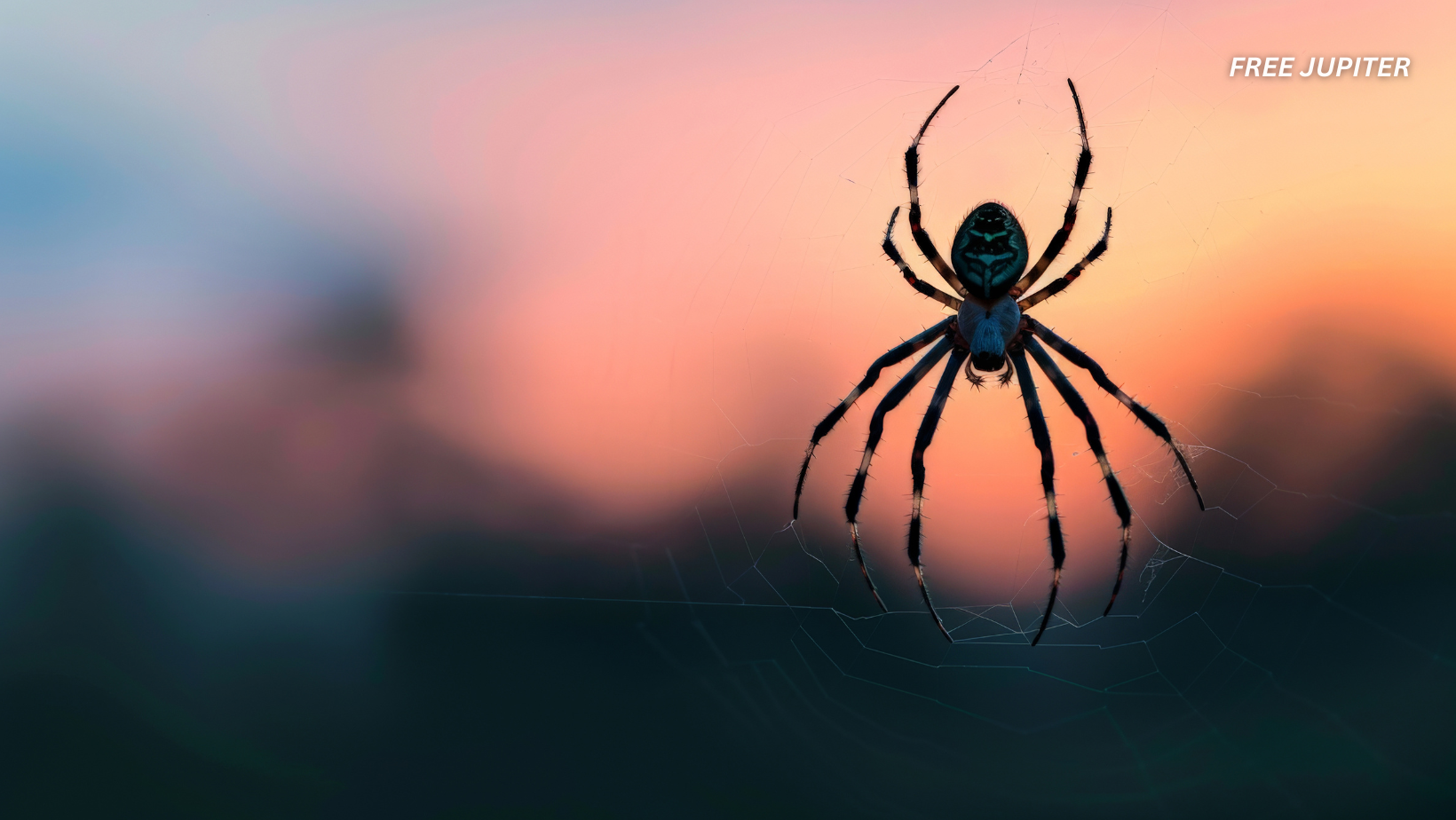Friendly Note: FreeJupiter.com shares general info for curious minds 🌟 Please fact-check all claims—and always check health matters with a professional 💙
According to new research, spiders and their many-legged relatives may not have evolved on land after all. Instead, they may have been sea creatures from the very beginning—brainy little ocean dwellers that later made the jump to dry land. And this twist in their evolutionary tale starts with a fossil and an unexpectedly familiar brain.
🧠 A Tiny Brain, a Big Revelation
Scientists recently zoomed in on the fossilized remains of a long-extinct marine creature named Mollisonia symmetrica, a small arthropod that lived during the Cambrian period—around 500 million years ago. While Mollisonia was already known to science, what wasn’t known was what it had inside its head.
Using high-resolution imaging and a trusty microscope, researchers got an unprecedented look at its nervous system. What they saw wasn’t just a few vague nerve bundles—it was a full-on brain, preserved in such detail that it could be compared to those of living creatures today.
Here’s where things get wild: the structure of Mollisonia’s brain wasn’t just vaguely similar to a modern spider’s—it was eerily similar. Specifically, it had the same strange neurological layout that spiders possess today, where the forebrain sits behind the circuits that control leg movement. This backward brain design isn’t found in insects or crabs—it’s a signature spider feature.
So what does this mean? Well, Mollisonia, a creature thought to be more closely related to horseshoe crabs, might actually be an ancient cousin of today’s spiders.
🌊 The Deep-Sea Origins of Arachnids?
The discovery shakes up a long-held belief: that spiders evolved on land. For decades, scientists based this on spider-like fossils found in old rock layers that formed on dry land. These fossils had eight legs, fangs, and all the classic spider gear, so the assumption seemed safe.
But the Mollisonia fossil turns that assumption into a question mark.
Nick Strausfeld, lead author of the study and a neuroscientist at the University of Arizona, explained that the brain structure alone is enough to make us reconsider where spiders really came from. “The backward organization [of the brain] is enough of a tell,” he said. In other words, if it walks like a spider and thinks like a spider—even 500 million years ago—it might just be a spider ancestor, even if it lived underwater.
This puts the evolution of arachnids—spiders, scorpions, ticks, and mites—in a new light. It suggests they might have first crawled through underwater terrain long before setting multiple feet on solid ground.
Read more: Swarms of Fireflies Are Lighting Up Illinois Again—And Scientists Say There Is Hope
🕸️ Wait… What Exactly Is a Spider?
Let’s take a short detour to appreciate what spiders actually are. They’re not insects (despite what your panic response might tell you). Spiders belong to a group called arachnids, which includes scorpions, harvestmen, and mites. Insects, on the other hand, have six legs and three body segments, while arachnids typically have eight legs and two main body parts.
Spiders are also some of the most skilled engineers in the natural world. They spin silk that’s stronger than steel (by weight), they build intricate webs that can act as homes or hunting traps, and some species even use their webs to glide through the air like tiny, eight-legged paragliders.
What’s more, spiders have a bizarre and fascinating physiology. Their blood is blue (because of copper, not iron), they “hear” through the hairs on their legs, and some species can go without food for months—only to strike with lightning precision when prey appears.
And now, apparently, they might have been ocean dwellers before they were backyard residents.
Read more: These Traits Are Common in People Who Choose Dogs Over Cats
🧬 Matching the Puzzle Pieces
To back up their claims, the researchers compared over 100 anatomical traits between Mollisonia, modern arachnids, and other arthropods—like insects and crabs. This massive comparison showed that Mollisonia shares far more with arachnids than with any other group, especially when it comes to neural layout and limb structure.
External features, like jointed legs and tiny pincer-like claws, also added more weight to the ocean-origin theory. These similarities weren’t just cosmetic—they appeared to reflect deep evolutionary connections.
Paul Selden, a spider expert and paleontologist at the University of Kansas (who wasn’t involved in the study), found the findings compelling. But he also urged caution. While the brain resemblance is fascinating, he said, we still don’t know how this fits into the wider arachnid family tree—which contains over 100,000 known species, and likely many more that haven’t been discovered.
🤯 Why This Changes More Than Just Spider Trivia
This isn’t just about where spiders came from—it’s about how life itself evolved on Earth.
Spiders are among the earliest known land animals. Their presumed land-based ancestry has helped scientists understand how animals transitioned from ocean to land. If spiders were already evolving underwater brains that resembled modern arachnids before they ever touched soil, it changes how we think about this transition.
It also raises bigger questions: If spiders may have come from the sea, what other animals have similarly soggy secrets? How many assumptions about land-dwelling creatures need to be reexamined?
And from a philosophical standpoint, it’s kind of beautiful: one of the world’s most feared and misunderstood animals might carry a hidden legacy of ancient ocean life. Your household spider may have ancestral memories—not of spinning webs in attics—but of crawling across coral reefs.
🧪 What’s Next? More Fossils, More Questions
Strausfeld and his team are already diving deeper (figuratively and literally). They hope to study other Cambrian fossils with better-preserved nervous systems. If more ocean creatures show spider-like brains, it could mean the sea was crawling with early arachnid ancestors long before land was even an option.
The study also opens the door for more advanced imaging techniques in paleontology. The fact that soft tissues like brains and nerves can survive for hundreds of millions of years—and be studied in such detail—is astonishing. It’s like nature left behind an ancient USB stick, waiting for someone to plug it in and decode the data.
Read more: Scientists Say More Animals Are Conscious Than We Ever Imagined—Even Insects
🕷️ So, Should We Be Thanking the Ocean for Spiders?
Maybe. Love them or fear them, spiders are essential to Earth’s ecosystems. They help control insect populations, serve as food for other animals, and have inspired human innovations in materials science, architecture, and robotics. Silk proteins, spider venom, and even their hunting strategies are subjects of modern research.
Understanding their true origin only deepens our appreciation of how interconnected life is—and how much we still don’t know.
So next time you spot a spider lurking in your shower or skittering across the kitchen floor, you might pause and imagine: once upon a time, its ancestors may have been swimming through prehistoric seas, their strange little brains already hard at work.










